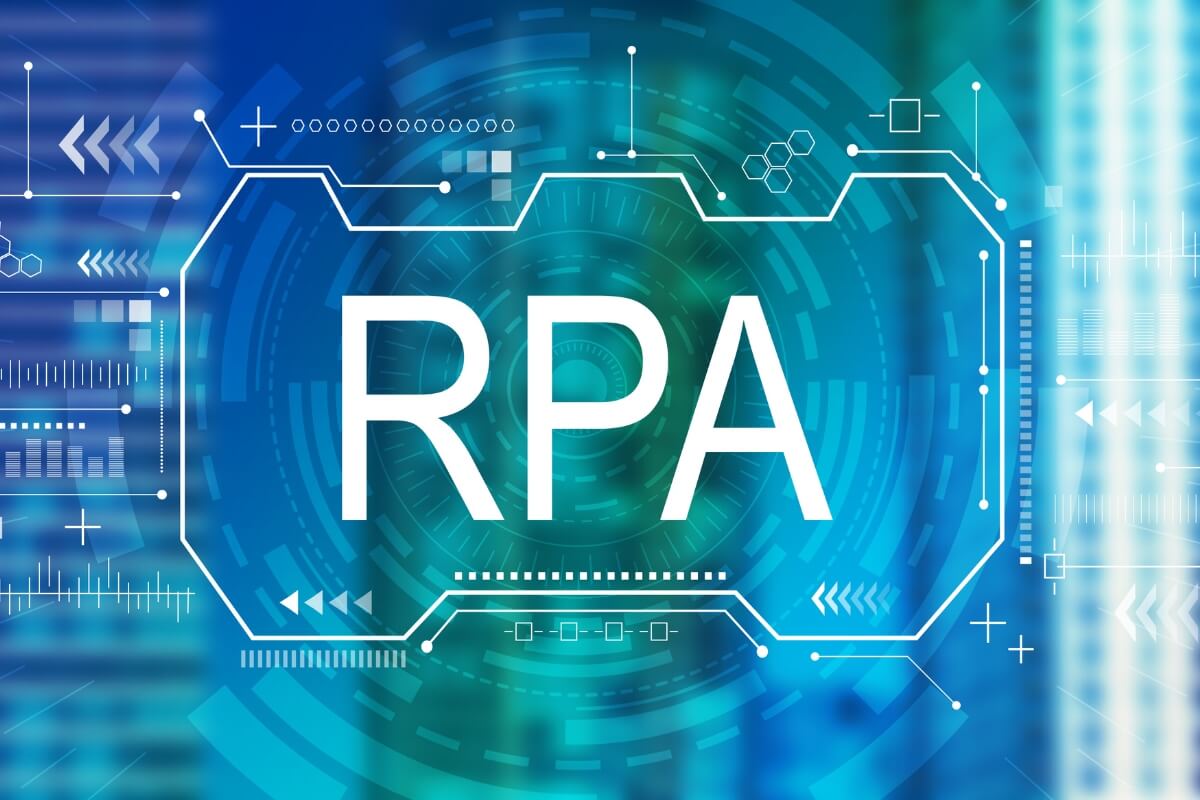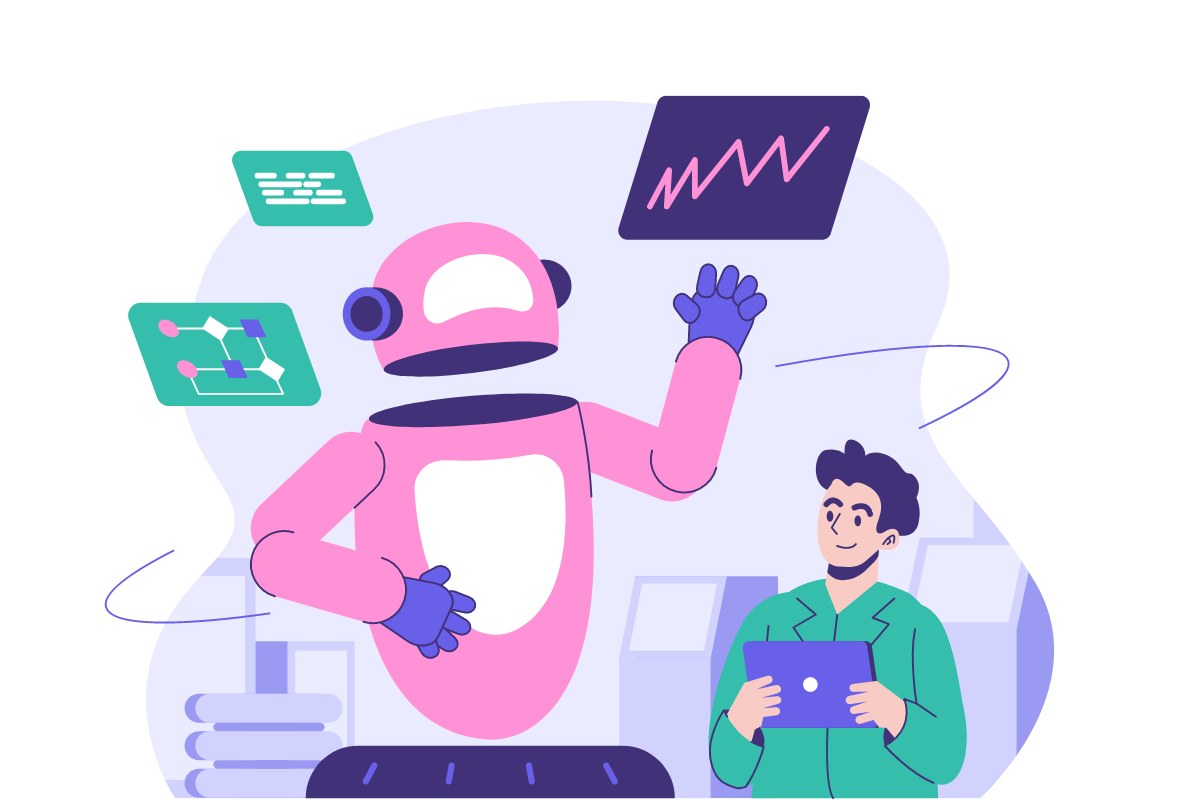Table of Contents
As call centers gradually phase out their legacy systems, they struggle to keep up as customer service becomes more consumer-focused.
Meanwhile, customers demand quicker and more efficient processes, making contact center automation the need of the hour. As a result of these changes in business processes, contact center as a service (CCaaS) has gained popularity. Innovating and automating contact centers is the solution to providing stronger, faster, and better support.
This article explores what automation looks like and what it means for contact centers in the coming years. Let’s get started!
Contact Center Automation Trends

UiPath’s trend report for 2022 notes that automation is one of the priorities in the C-suite. Chief information officers (CIOs) try to determine how to apply technology across the business. As contact center automation booms, various tools and solutions emerge.
Below are the three biggest automation trends in contact centers:
Robotic Process Automation Improves Back-end Functions
Robotic process automation (RPA) enables companies to streamline labor-intensive processes, avoiding monotonous tasks and improving efficiency. Precedence Research says the RPA market will reach almost $24 billion by 2030. Another survey from Deloitte shows that almost 80% of businesses are already implementing RPA.
Robots can significantly help contact centers. Customers can quickly fulfill basic requests, while agents concentrate on complex issues that need a human touch.
RPA also collects information from various locations and consolidates customer data into a single interface for agents, giving them a full overview of a caller.
Organizations Will Focus on Successful Artificial Intelligence Deployment
The UiPath trend report shows that the return on investment (ROI) for contact center automation lags due to the time it takes to acquaint employees with the technology. That is despite the rising investment.
Implementing a new artificial intelligence (AI) model takes at least a month for most companies. Some AI models remain unused.
UiPath suggests that automation centers of excellence (CoEs) step in to solve implementation problems. They should encourage collaboration by identifying areas where companies have powerful but undeployed AI models.
They also suggest allowing automation CoEs to use advanced automation platforms to quickly deploy and manage AI-enriched workflows.
Staff Requires Time To Get Accustomed to Human-digital Workspace
A hybrid human-digital workforce might be the new normal in the next five years, with live and virtual agents collaborating together. Reaching this point won’t be as easy as investing in the tool and letting it run. IT and HR teams must shepherd real change and get employees on board.
The skills and duties of some employees might change with this trend, so it will take time to blend them into the human-digital workspace. As Deloitte says in a recent report, human stigma still prevents robots and automation from entering the mainstream.
Contact Center Automation Techniques of the Future

Contact center automation involves accomplishing recurring tasks with tools that eliminate the need for human intervention. According to the World Economic Fund, over 80% of businesses deploy automation techniques across various processes to offload time-consuming and routine tasks. Automation improves efficiency and the customer experience.
For instance, companies can use automatic speech recognition (ASR) to enhance an interactive voice response (IVR) system. This allows clients to use self-service solutions for requests such as balance inquiries. ASR also verifies a customer’s identity before connecting to a representative.
Here’s a detailed look at the automation techniques of the future.
Forecasting Automation
Contact centers collect large amounts of data, such as client and product information and the total number of inbound tickets, and use them for forecasting and analytics.
CCaaS enables forecasting automation, which uses data to understand patterns and trends in existing datasets and develop accurate predictions.
Forecasting automation helps contact centers better comprehend their datasets and obtain actionable insights. For instance, it tells companies the best time to perform off-phone activities. Automating this process removes the need to design strategies manually to optimize data for better results.
Sales Automation
This contact center automation technique helps expedite marketing- and sales-related activities. Sales automation aims to speed up purchase cycles and boost conversion rates.
With this technique, you can automate tasks such as fulfilling campaigns, onboarding customers, and sending post-email sales and announcements.
Furthermore, sales automation delivers a personalized experience to potential clients. For instance, it automatically sends out sale discounts via email based on a consumer’s purchase or browsing history.
Interaction Automation
Automated interaction involves using a CCaaS tool, such as chatbots. In other words, automated interaction involves all forms of customer self-service solutions. An AI-powered IVR is an excellent example of automated interaction for contact centers.
These technologies obtain information about a client’s intent and familiarize customer service representatives with the caller’s needs before a call or live chat.
For instance, an AI-powered IVR or online knowledge base for customer service offers agents a better understanding of a buyer based on their purchase history or past customer interactions.
Workflow Automation
From managing multiple channels and encoding data to interacting with customers and sending emails, contact center representatives manage complex workflows. These tasks are prone to human error.
Workflow automation allows agents to set up automated tasks, letting AI manage all the mundane and recurring tasks involved in daily operational processes.
You can use contact center automation tools for simple activities, such as encoding client data, and complex ones, such as following up with prospects. Automation helps agents save time that they can spend on more demanding tasks.
After-call Work Automation
After each call, agents complete after-call work (ACW). When done properly, it adds significant time to the end of contact. When rushed, incorrect data enters the customer relationship management system.
A common example is when encoding disposition codes. Agents often pick the code at the top of the list, despite the actual call intent. Fortunately, robotic process automation (RPA) accomplishes most of the ACW process, improving data integrity and saving time.
By monitoring the steps agents follow and the systems they dip into, AI can record their digital footprints during an interaction. They can auto-accomplish most ACW forms, automatically generating a summary of contacts. Agents only need to verify the information, streamlining their tasks and trimming valuable time from each call.
The earlier portion of call dispositions can also be automated using speech analytics to identify a caller’s intent. Connecting disposition codes to IVR is also an option; callers can effectively enter the codes themselves.
Contact Center Automation Features To Look Forward To

Automation is one of the fastest-growing industries. The workflow automation market alone might reach nearly $79 billion by 2030, growing at a 23.4% compound annual growth rate (CAGR).
Here are examples of effective contact center automation tools that provide the best AI and human intervention.
Customer Assist
Customer assistance automatically routes clients to the record system via voice assistants or chatbots in their preferred messaging channel. It eliminates engagement channel barriers and the associated manual responsibility to resolve issues, speeding up resolution.
It uses AI so that consumers can self-serve, act autonomously, and directly interact with internal systems without human assistance.
This benefits contact centers by deflecting low-value and tier-1 support interactions. It also delivers 24/7 customer service at scale. Using chatbots to fulfill basic tasks improves contact center performance indicators such as customer satisfaction rate and average handle time (AHT).
Machine Learning Automation Tools
Expert associates tell AI which interactions to automate and which to keep under human intervention. This uses the institutional knowledge of contact center employees to augment processes in new, innovative ways while maintaining traditional interactions’ tone and quality. AI needs employees in order to learn, optimize, and reason in various interactions.
Employees are an organization’s differentiator in the competitive contact center space. They are brand representatives and often have the key to making customer interaction successful.
It can be a certain cadence, phrasing, inflection, or knowing when to pull back and push. All these are insights that human agents can teach AI to become more thoughtful.
Associate Assist
Contact center agents must remember compliance regulations while assisting customers. For example, agents who handle payments must follow the Payment Card Industry standards. Conversely, agents managing private medical records need to comply with Health Insurance Portability and Accountability Act protocols.
Use AI and contact center automation behind the scenes to assist associates. Give them prompt and effective access to the right information. Agents can interpret data in real-time and help clients solve issues.
Automated guidance provides customer service representatives with real-time assistance as they handle specific situations. This automation tool ensures each agent adheres to the regulations. It also helps agents through scripting, visually mapping procedures and processes, and configuring chatbots.
This thoughtful automation tool combines human creativity, empathy, and intuition with technology’s ability to calculate and remember various outcomes and options.
Automated Scheduling
Improper contact center scheduling leads to overstaffing or understaffing, both of which can result in monetary loss. Creating an optimal schedule requires you to:
- Overlap time slots to ensure gaps between shifts are filled in;
- Line up all the available schedules of each rep, and
- Align the time slot schedule for every agent.
Completing these sets of tasks every day is tedious.
However, automated scheduling helps companies through AI-powered algorithms. It automates scheduling, considering all these factors and ensuring that no representative is underutilized or overutilized. Automated scheduling also helps managers save time for primary tasks.
Speech Technology
Contact centers can use the following speech technologies:.
- Automated speech recognition (ASR) allows bots to recognize when a customer is talking.
- Speech synthesis markup language (SSMLA) enables bots to provide customized audio responses.
- Text-to-speech (TTS) engines can be used with SSMLA to provide details on the text that must be censored, to provide pauses, and to prepare audio formatting for unique text, such as abbreviations and dates.
- Barge-in is when a user interrupts the bot while it is talking. Considering how bots respond to a barge-in is crucial.
Contact center tools use these speech features in conjunction with TTS catching and language configuration. Continuous ASR allows the software to obtain speech from the user; it detects pauses and concatenates text segment output from STT engines to the AI into a single message to ensure that no segment is cut off.
Additionally, the AI can be programmed to either immediately stop responding or ignore the barge-in and process the new speech from the caller. This is useful when a user interrupts a conversation.
Benefits of Automating Your Contact Center

Reducing costs and improving efficiency are the two main drivers of automation investments across various sectors. According to CAMUNDA, about 67% of businesses use automation to enhance visibility across multiple systems.
When implemented properly, contact center automation improves business areas. Here is a closer look at the benefits of automating your contact center.
Improve Customer Satisfaction
Customer satisfaction is the top-voted “very important” metric, and 88% of consumers agree that the contact center experience is just as important as the product itself. Forrester also reports that 3 out of 4 consumers agree that valuing time is crucial to delivering good customer service. But most customer interaction over voice starts with the dreaded on-hold tune. Automation lets companies start the interaction with qualifying questions and verify the customer, if applicable.
In most scenarios, customer requests can be accomplished within minutes with the help of a virtual agent. Issues such as password recovery and statement requests can be handled with a combination of smart processes and natural language processing (spoken over a phone call or written down in chat). These tools link back-end data, systems, and customers.
In other situations, a live agent must solve problems. Contact center automation with intelligent routing combines all relevant data (such as type of request and customer account data) and connects customers to the appropriate agent.
Intelligent routing means less waiting for clients. Moreover, it decreases average hold time (AHT) because customers are verified, pre-qualified, and routed to the best-fitting representative.
Boost Efficiency and Productivity
Contact center automation impacts your efficiency on a large scale. From a business perspective, lower AHT is the greatest benefit automation brings to the table.
AHT is the average time a human representative needs to manage contact. Depending on your use case and business sector, AHT ranges between four and 10 minutes. Reducing your AHT by a few minutes significantly impacts your key performance indicators (KPIs).
Many initiatives use a phased approach to gradually increasing automation, beginning with simple tasks and expanding to more complicated cases.
Here is an example of how automation for inbound calls can affect AHT in various steps.
Phase 1: Intent Recognition and Optimized Routing
The customer is asked for their intent upon calling and is directly connected to the most appropriate agent.
-> -15 seconds AHT
Phase 2: Automate Identification and Verification
All problems that need customer authentication are transferred to an automated identification process. If necessary, it can include a multifactor process or authentication for lost credentials or forgotten passwords. Upon transfer to a live agent, the interaction entirely focuses on solving the problem.
-> -30 seconds AHT
Phase 3: Back-end Integration for Issue Management
Recurring customer problems with specific handling processes can be fully automated using conversational AI and connections to relevant back-end systems while ensuring traceability, security, and compliance.
Automating the management of 20% of inbound calls is a real trademark. This leads to longer AHT because live agents handle more complex cases. But the reduction in the total number of human-managed calls outweighs this effect.
Leverage Revenue Opportunities
Contact centers face the challenge of balancing staffing expenses with maintaining service levels. Shortening wait times can enhance customer satisfaction and potentially increase revenue, but this often leads to higher labor costs, which could negate the financial gains. On the flip side, reducing costs by increasing wait times may lead to decreased customer satisfaction and revenue loss.
Expanding operations by hiring more staff can be problematic, especially when reducing wait times is essential. Challenges such as the scarcity of qualified candidates and lengthy onboarding processes can hinder a contact center’s ability to quickly adapt. Additionally, there’s the risk of missing out on potential customers who are either seeking information or have yet to begin their customer journey, leading to significant opportunity costs.
The adoption of AI-powered automation offers a solution by tilting the balance towards enhanced customer satisfaction and positive financial returns without escalating overall contact center expenses. Utilizing conversational AI, businesses can expand their reach across more digital channels, engaging new clients without incurring additional costs.
Increase Employee Satisfaction
While contact center automation undoubtedly reduces AHT, its primary goal is not to replace human agents, despite the fact that staff turnover is relatively high among contact center employees.
Generally, automation initiatives don’t lead to sudden morale-impacting or sudden terminations of employment. Instead, natural attrition is often enough to shrink staffing numbers as automation continues.
Most contact centers claim that support from virtual agents contributes to job security and work satisfaction. Here’s how automation helps.
- Virtual contact center agents can manage only simpler and well-defined cases, even with AI support and state-of-the-art technology. Most human contact center representatives get higher job satisfaction from dealing with complex inquiries that require more expertise and training.
- Agents appreciate the relief from repetitive tasks. No staff wants to ask callers the same identification questions during work.
- Intelligent routing and active agent support are more productive and successful. Issue resolution happens faster than random call distribution, leading to transfer from agent to agent.
While improving KPIs and decreasing total handling costs are the primary motivation for automation, the best results are evident from initiatives that acknowledge teamplay between virtual and human agents. The precision, scalability, and tireless efficiency of robot agents, plus the problem-solving skills, intellect, and empathy of human agents, pave the way for success.
The Bottom Line

You can automate various processes in your contact center, from scheduling and sales to forecasting and internal workflow. Contact center automation is the future of customer interaction and support. Many forward-thinking organizations aim to improve the customer experience, starting with automation.
Unity Communications is a leading customer service outsourcing provider. We help small and large enterprises automate the way they deliver customer service. Our contact center service helps businesses improve process efficiency, reduce agent workloads, improve customer experience, and reduce operating costs.
Connect with our experts now to find out how we can help.



